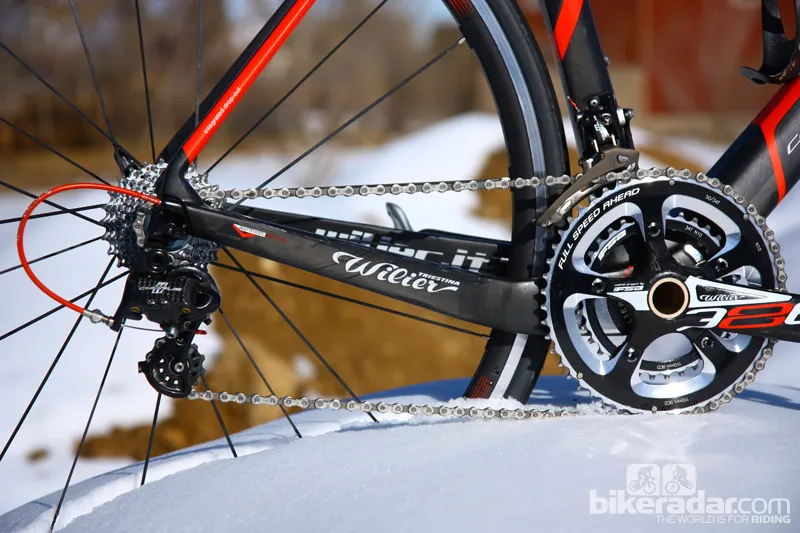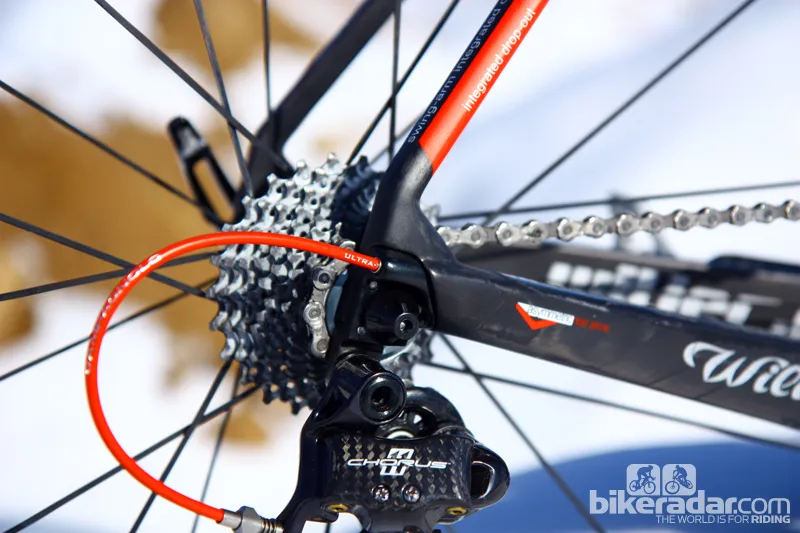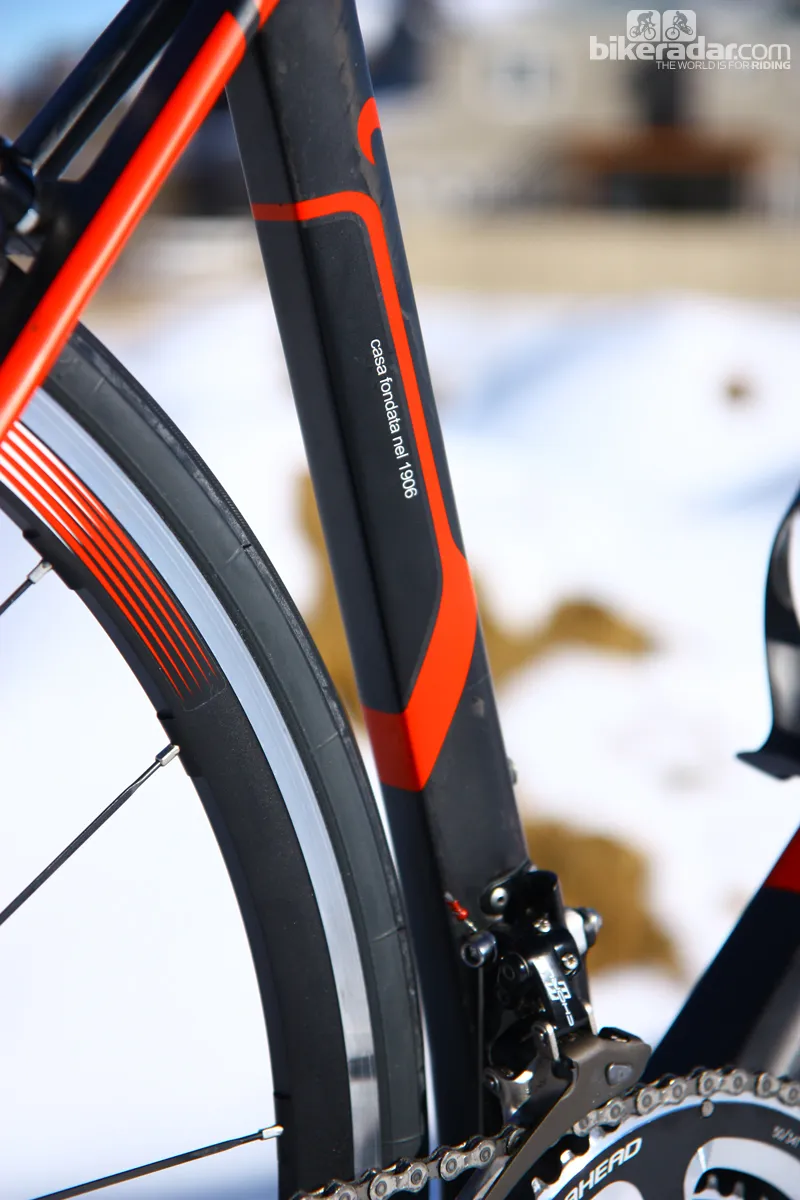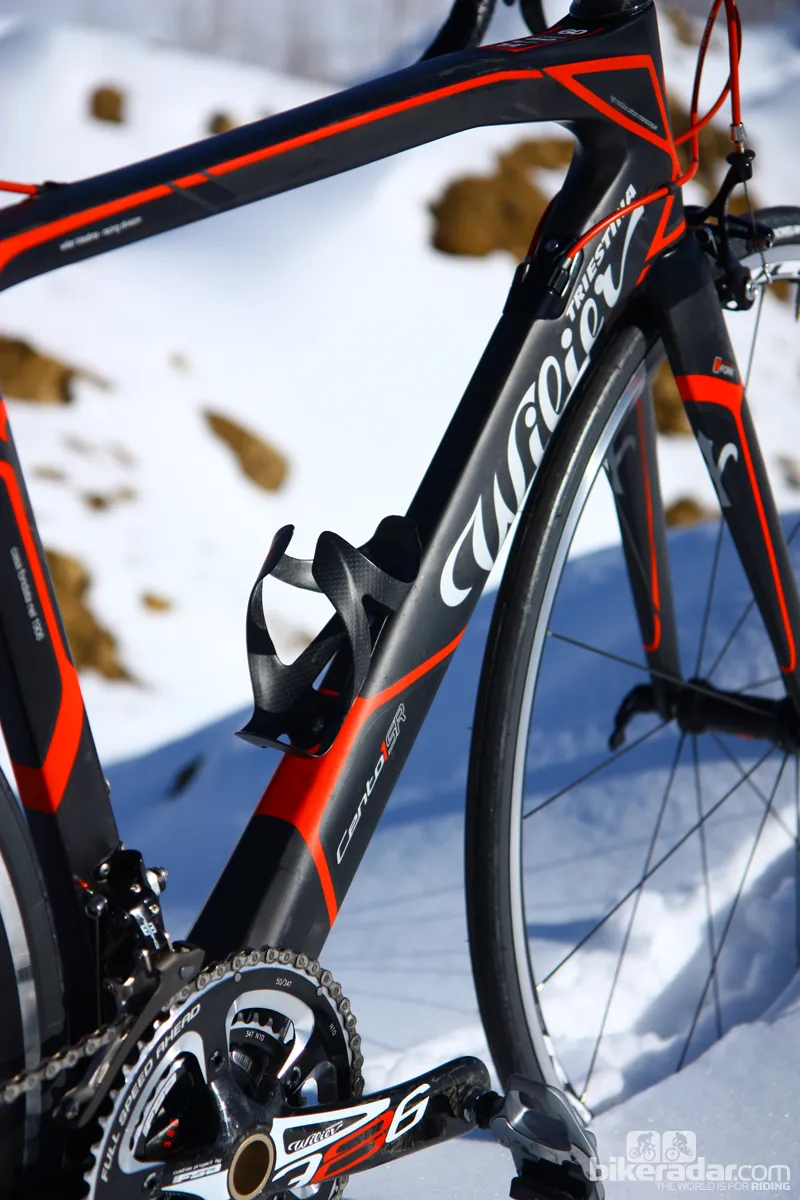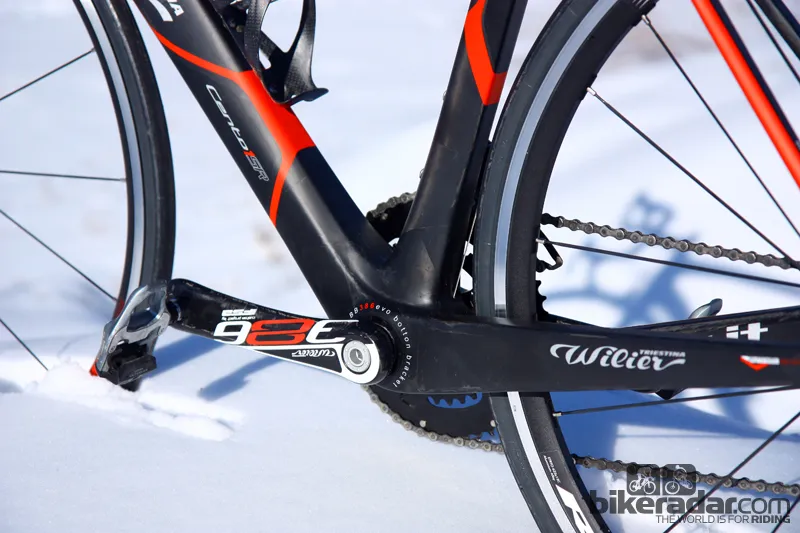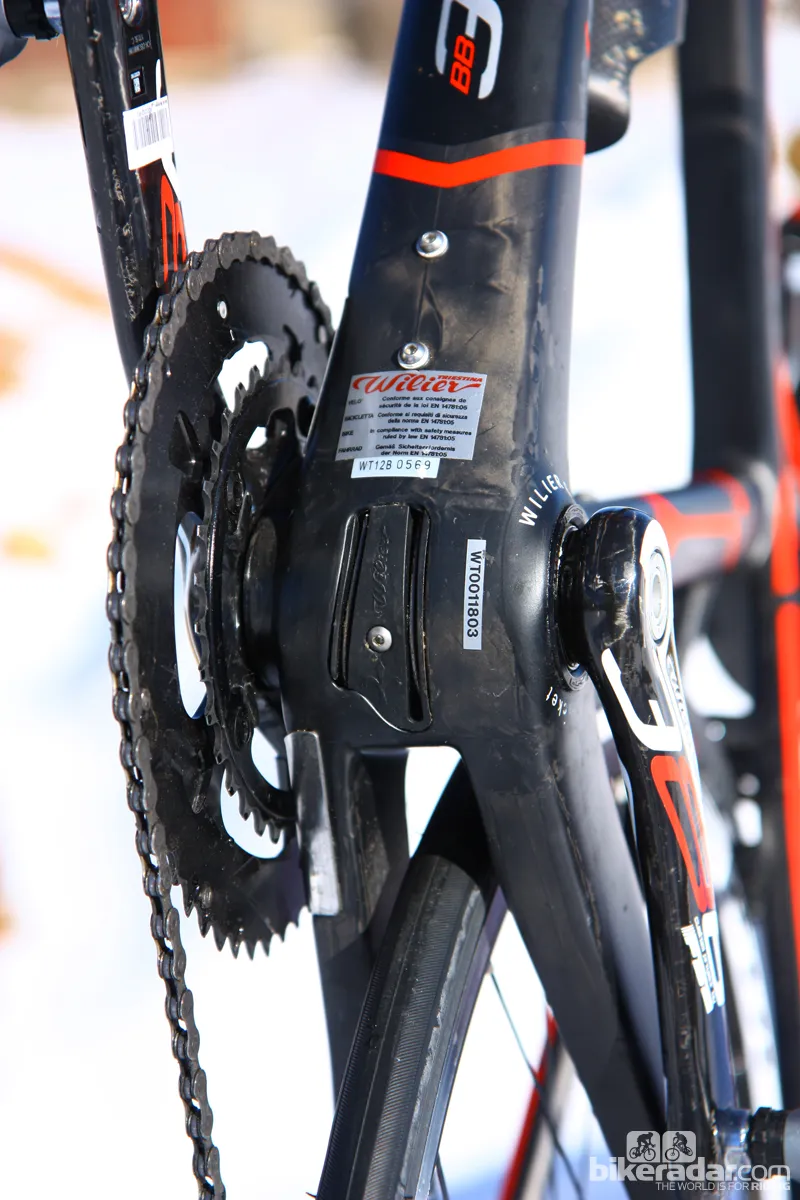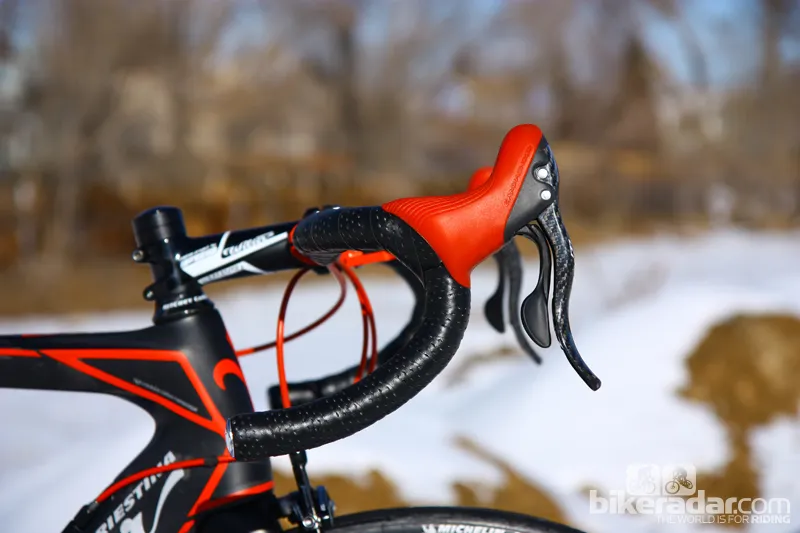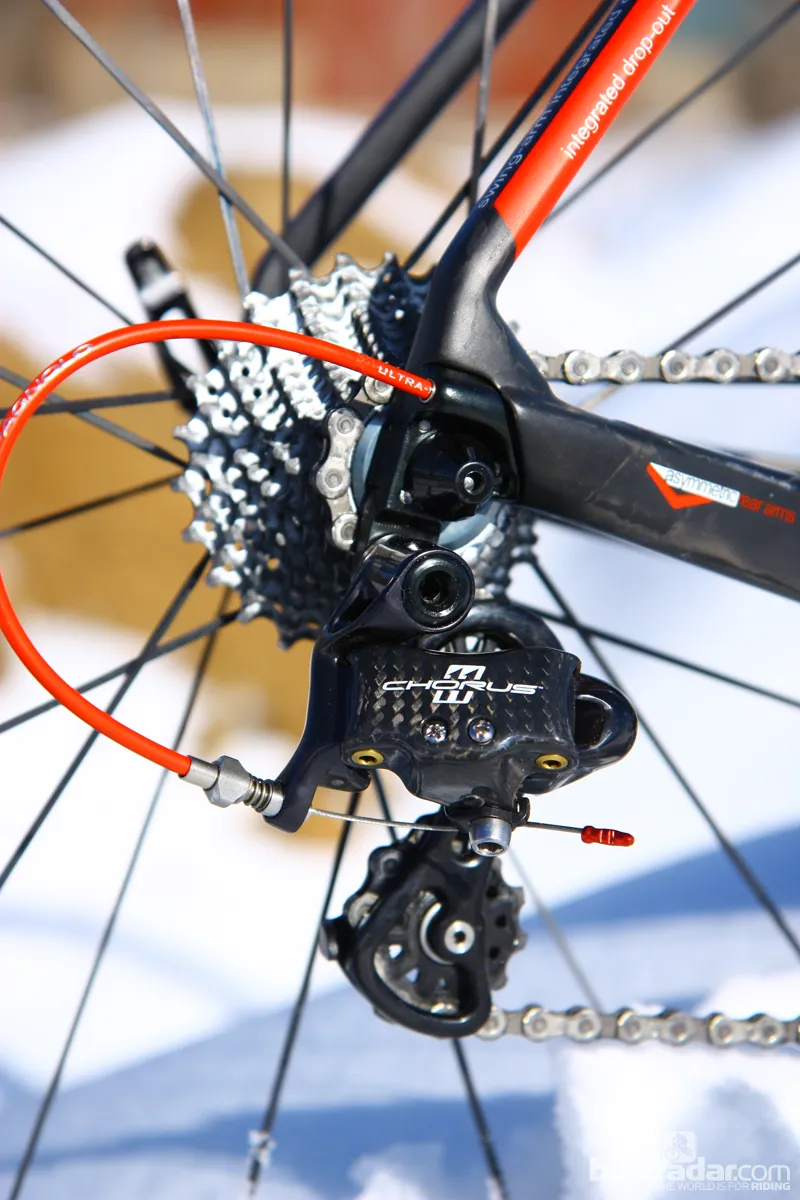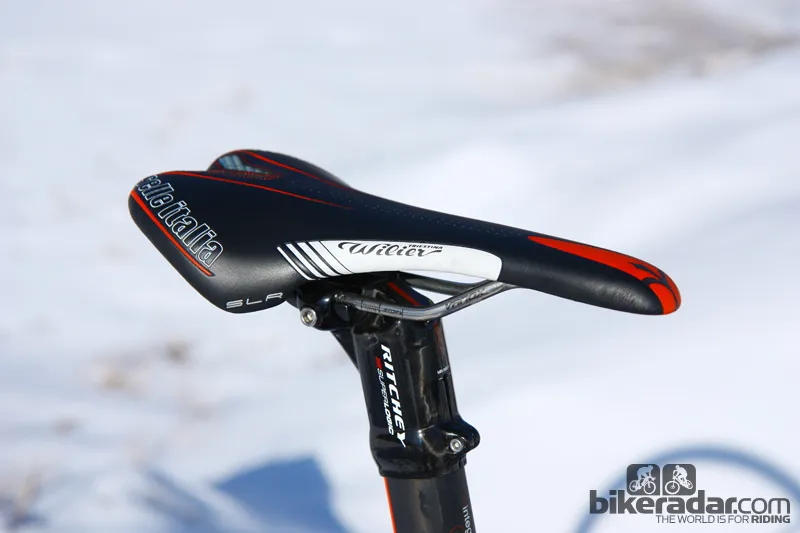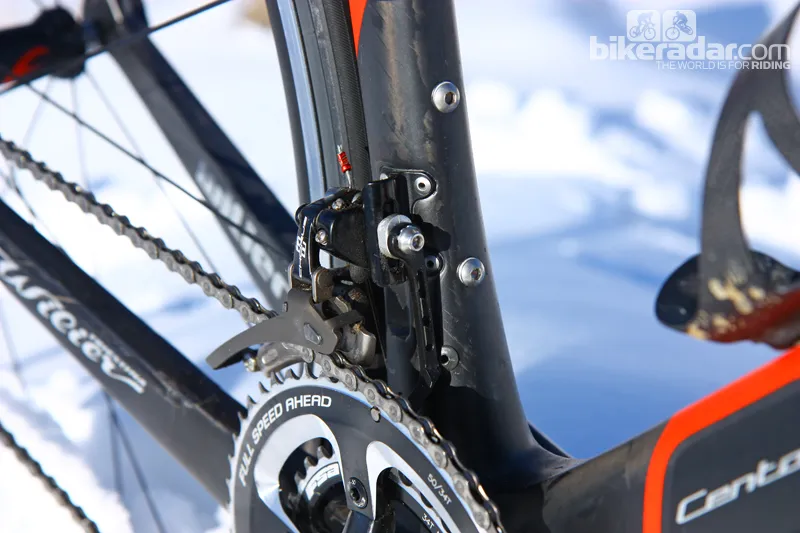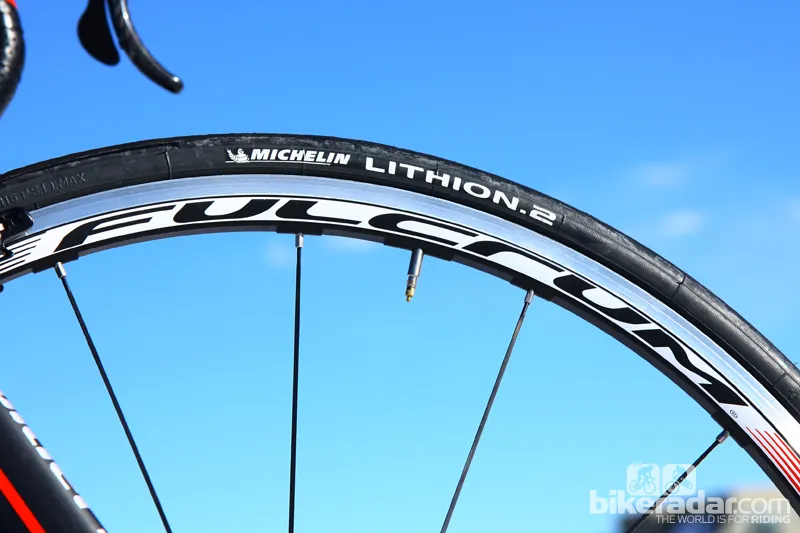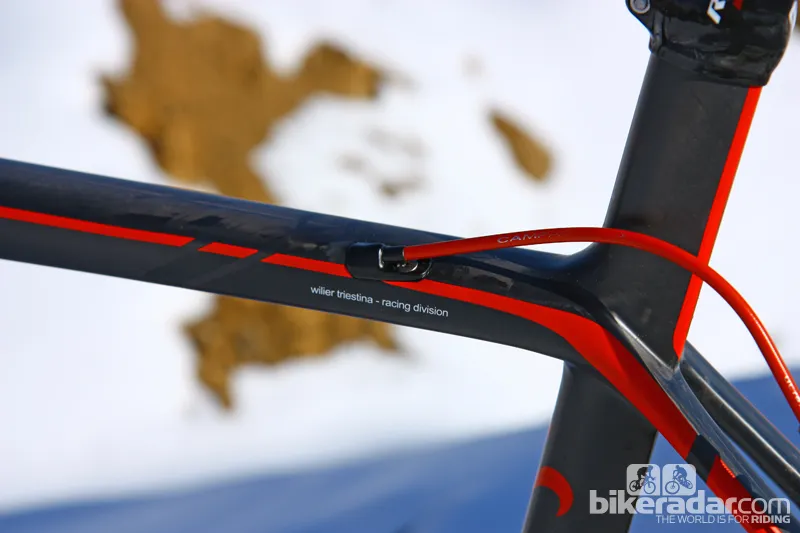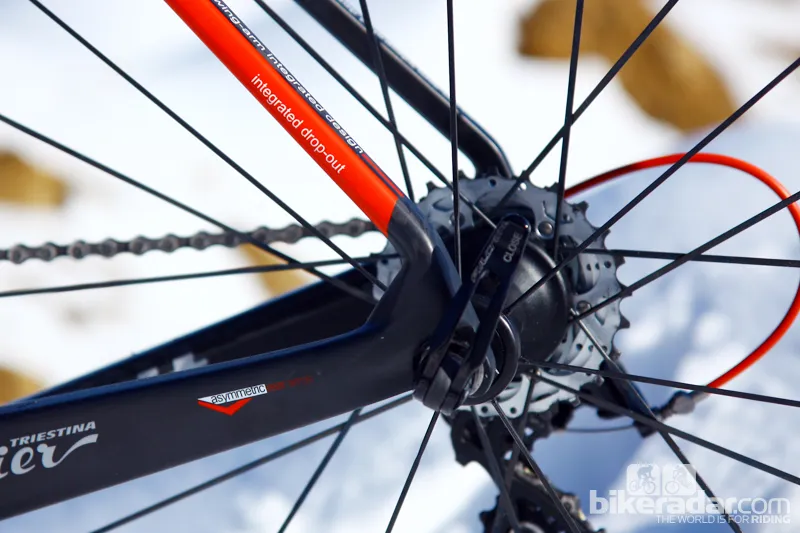Wilier Triestina has taken full advantage of the BB386 EVO bottom bracket standard it developed with FSA and BH with the new Cento1SR's hugely oversized tubes. It's immensely stiff, as one would expect, but despite appearances it's a fantastically comfortable bike for the long haul, too.
Ride & handling: Racy and comfortable
The Cento1SR's enormous down tube and chain stays back up their visual brawn with plenty of bite. Standing up on the pedals returns a stout and solid foundation beneath you, power transfer feels immensely efficient, and there's simply no sensation of wasted energy.
We've ridden plenty of stiff and efficient bikes, however. What's far more impressive is how Wilier has managed to pair that rigidity with a surprisingly smooth and comfortable ride quality. Road buzz is well damped, with even nasty chip seal barely disrupting the frame's silky glide across the pavement. Even so, the Cento1SR still isn't blandly isolating, either, with plenty of useful information coming up through the bar and excellent road feel.
Even more unusually for such a healthily proportioned frame, bigger hits are well controlled, with the resilient frame taking the harsh edge off and staying pleasantly lively throughout. There's no unnervingly hollow sound when you're rolling along, either, as we've occasionally noted on some other big-tubed carbon bikes.
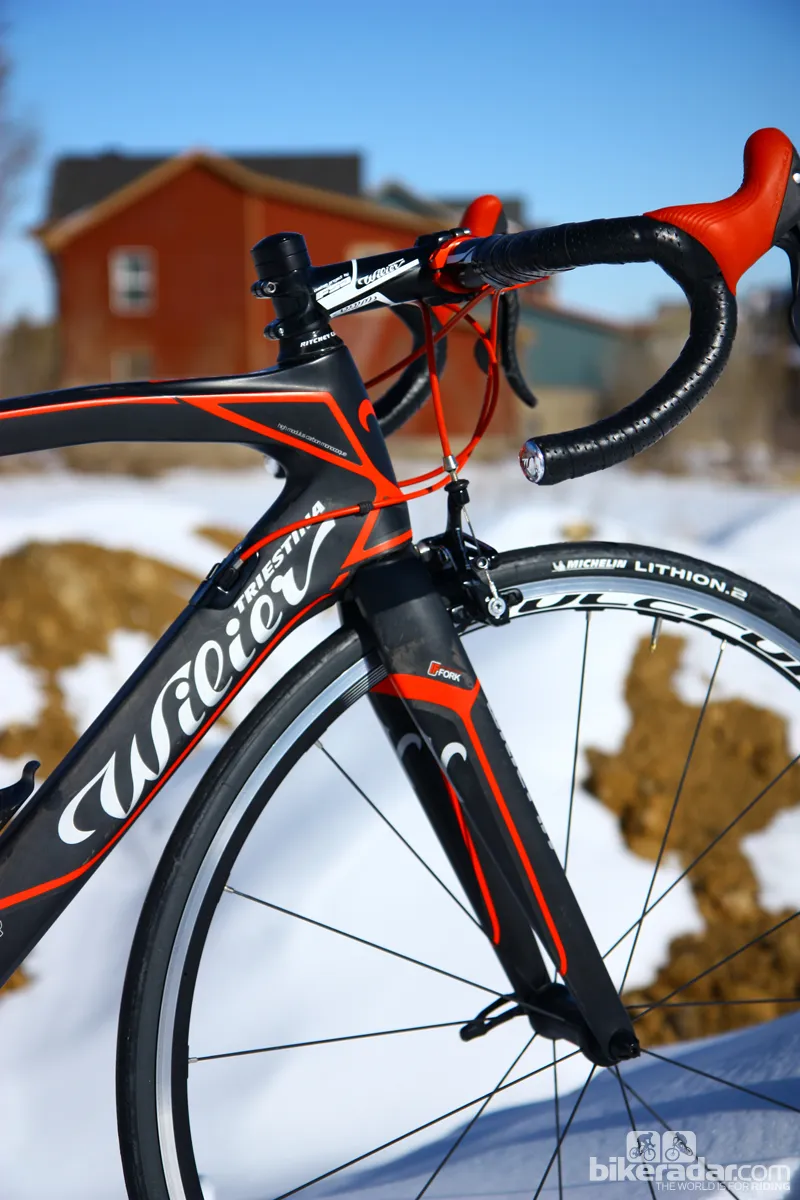
Note the stout front triangle
Wilier seems to have nailed the geometry aspect as well, with telepathic handling deftly ripping through downhill corners and nimbly flicking from edge to edge with little more input than a slight lean here or miniscule tug there. Even so, it's still rock-solid over 80kmh (50mph) with fantastic stability and none of the nervousness that can afflict other quick-handling machines.
Such a stiff-yet-comfortable ride naturally lends itself to long road races and long rides in general, and the fit largely reflects this. Our medium-sized test bike bears a rangy 387mm of reach and just 536mm of stack – roughly between Trek's 54cm H1 and H2 geometry in terms of length but closer to the more aggressive H1 numbers in terms of height.
We happily settled in with the stem slammed down on top of the 20mm-tall headset cone, but you could easily swap it out for a lower-profile bit if you wanted to get even lower.
Likewise, we were able to stuff 28mm-wide tires between the stays and fork blades, seemingly with a few millimeters to spare. The official maximum tire size is probably closer to 25mm, though.
Finally, the Cento1SR is light but not worryingly so. Our bike came in at just 7.06kg (15.56lb) without pedals, with aluminum clinchers and Campagnolo's workhorse Chorus group.
Frame: Oversized everything
Much of the Cento1SR's frame construction centers on the enormous BB386 EVO bottom bracket, which sports the same 86mm width as Shimano's popular press-fit system but with the larger diameter of BB30. As a result, the down tube is not only about 70mm across at its widest point but also 55mm tall. Far more dramatic, however, are the humongous asymmetrical chain stays, which are an almost comically tall 55mm and up to 25mm wide – outrageous numbers by any measure.
The front end is slightly more modest, with a tapered head tube that grows to 1 1/4in at the base of the steerer instead of the more popular 1 1/2in dimension – perhaps one of the keys to the Cento1SR's admirable ride quality. Likewise, Wilier tones down the seat stays with broad but slim profiles.
Kammtail-style aero profiles are found on the seat tube, integrated seatmast, down tube, and fork blades, although it's worth noting that Wilier doesn't make any claims whatsoever in terms of time or energy savings. If there is some positive effect, great, but if not it doesn't feel as though Wilier has made performance sacrifices in the process so we've no complaints.
Cable routing is internal throughout, and Wilier has done a very good job of making the system both adaptable to electronic and mechanical drivetrains and easy to deal with.

Internally routed cables are ported through this removable cap
The derailleur cables are fed into the top of the down via a large, removable cap that also neatly incorporates barrel adjusters on the mechanical version. Fishing the lines down through the removable guide at the bottom bracket is pleasantly simple and the rear derailleur cable readily pops out of the end of the dropout.
Feeding the rear brake through the top tube is refreshingly straightforward, too, with a big removable exit port and an angled cutout that naturally hooks the end of cable. The setup still isn't as easy to service as externally routed cables, mind you, but it's about as close as we've come. Well done, Wilier.
Visually, the Cento1SR is mostly quite tasteful, particularly with the relatively minimal graphics on our matte black test bike. We could do without the laundry list of technical features emblazoned on the top tube, however.
All that surface area carries with it a lot of material, and the Cento1SR frame isn't superlight by modern standards, even with the use of high-modulus, 60-ton carbon fiber. In fact, it's actually quite heavy – and far heavier than Wilier's 900g claim. The actual weight of our medium test frame is 1,190g (with rear derailleur hanger, cable routing hardware, trimmed seatmast, and water bottle bolts) with the matching fork adding another 370g.
Equipment: Campagnolo Chorus is an unsung workhorse
Our test bike arrived with a wonderfully functional but perhaps largely unheralded build kit. Included in the spec sheet are a Campagnolo Chorus group, FSA K-Force Light BB386 EVO carbon cranks, Fulcrum Racing 3 aluminum clinchers shod with Michelin Lithion 2 tires, a Selle Italia Flite saddle, and an FSA Energy aluminum bar and stem.
Simply put, Campagnolo's third-tier group is flat-out fantastic, being functionally identical to Record and Super Record at a fraction of the price. The hoods are super comfortable, the shift levers return reassuringly solid and substantial-feeling feedback while silkily and reliably easing the chain from cog to cog, Campagnolo's Ultra-Shift mechanism offers the best multi-shift capability of any drivetrain – electronic or mechanical – and the drivetrain runs refreshingly whisper quiet.
Add to that the wonderful dual-pivot brakes, which have heaps of power with excellent control and lever feel.
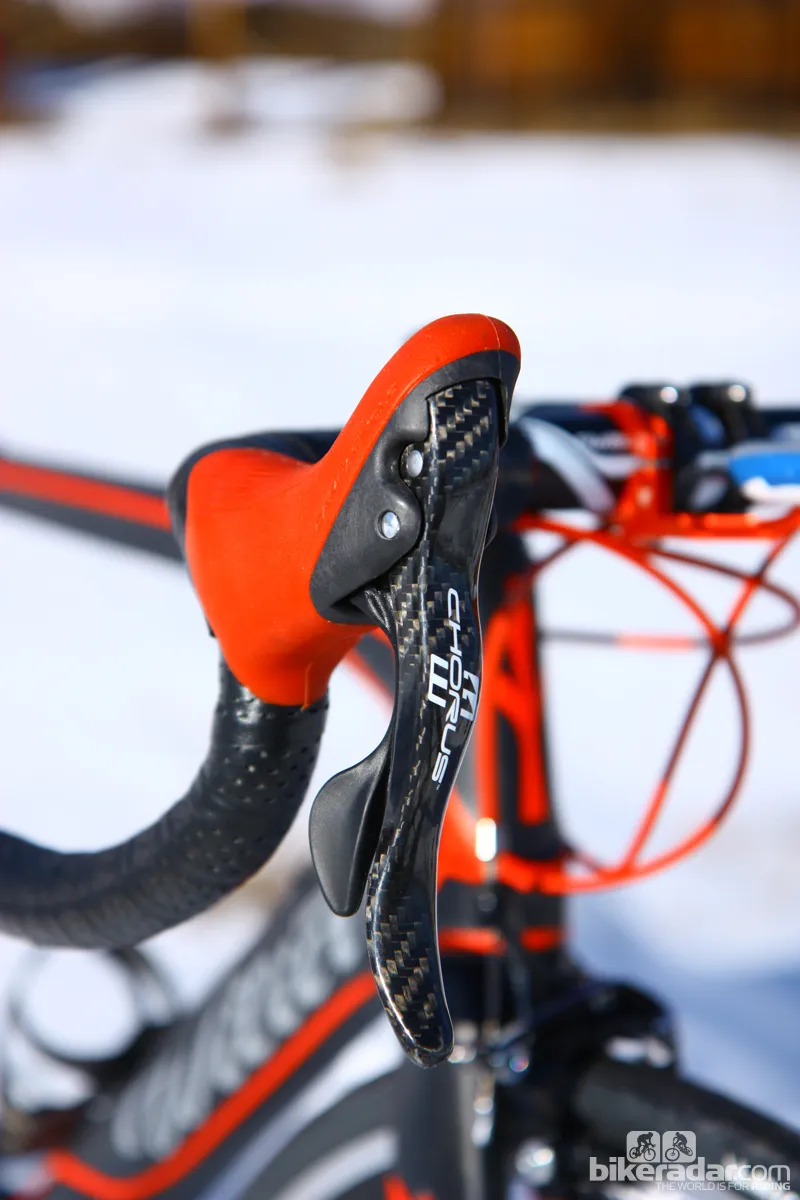
Campag's Chorus group doesn't get nearly as many accolades as it should
That all being said, there's always room for improvement. Brake lever reach can be extended but not shortened (and not easily, either), the rear shift lever detents should be a little more precise, and we occasionally wished for smaller steps to better position the micro-adjust front derailleur cage, especially when running at or near the big-big combination. Aside from those minor issues, the Chorus stuff is brilliant and, ignoring cost issues, deserves far more spec than it gets currently.
Likewise, Fulcrum's mid-range Racing 3 wheels don't receive much attention but they're highly competent, with lots to offer. Claimed weight is a respectable 1,550g per pair but that figure doesn't lend any clues to the rear wheel's very good torsional stiffness, nor how well the adjustable cup-and-cone bearings roll across the road. They're far from aero but in terms of everyday wheels they're a great choice.
The accompanying Michelin Lithion 2 tires could stand for an upgrade if racing is in your plans, though. Grip is very good but the 60TPI casings are a bit stiff. They ride well despite that but the feel is more one of being rather heavily damped than quick and lively. We had a better time on a set of high-TPI Vittorias.
All in all, we walked away from our test bike mighty impressed. Weight weenies will certainly be more drawn to Wilier's ultralight Zero7 – and, for the money, the frame's surprising heft costs it half a star. But for a high-end everyday machine the Cento1SR would otherwise be a superb choice.


